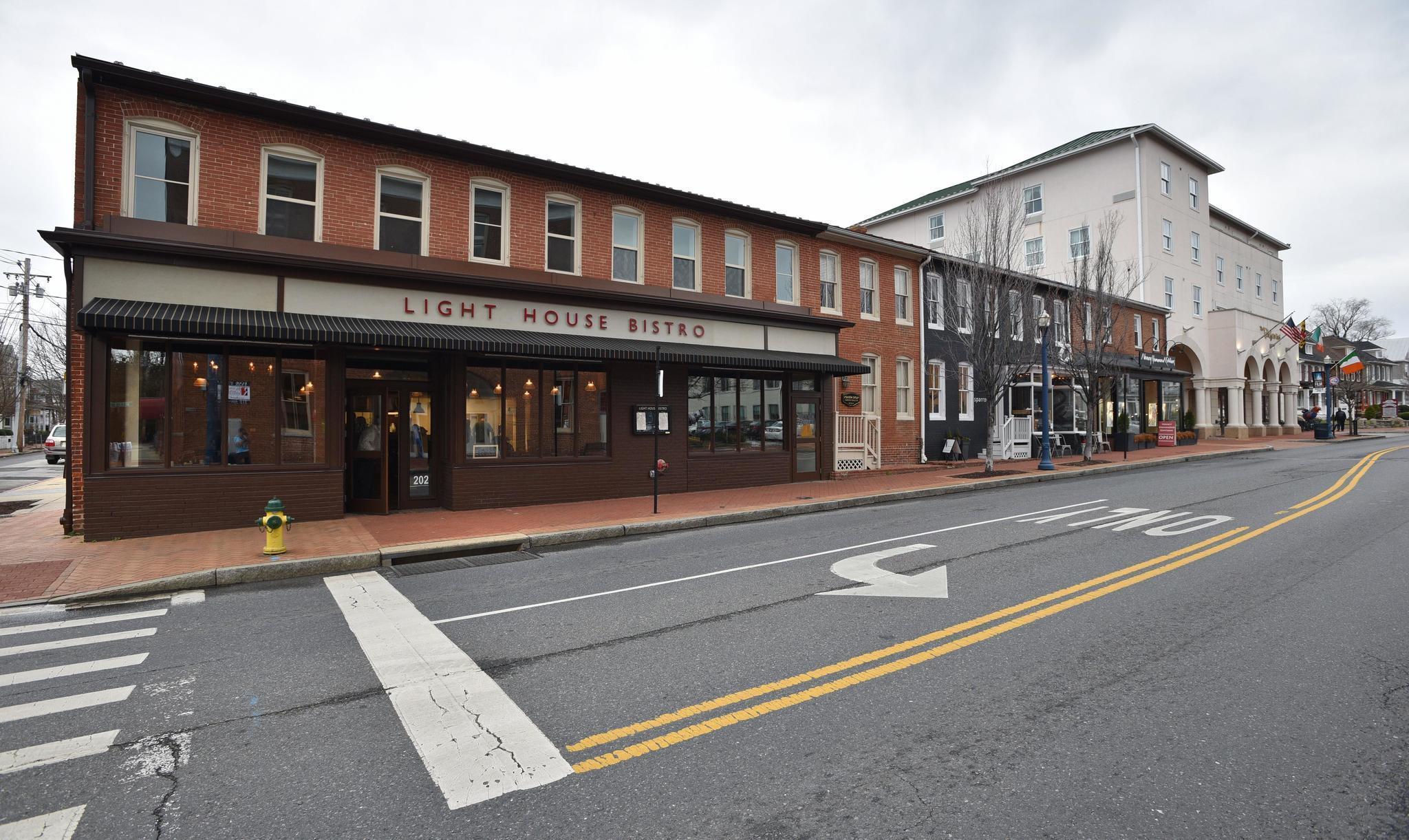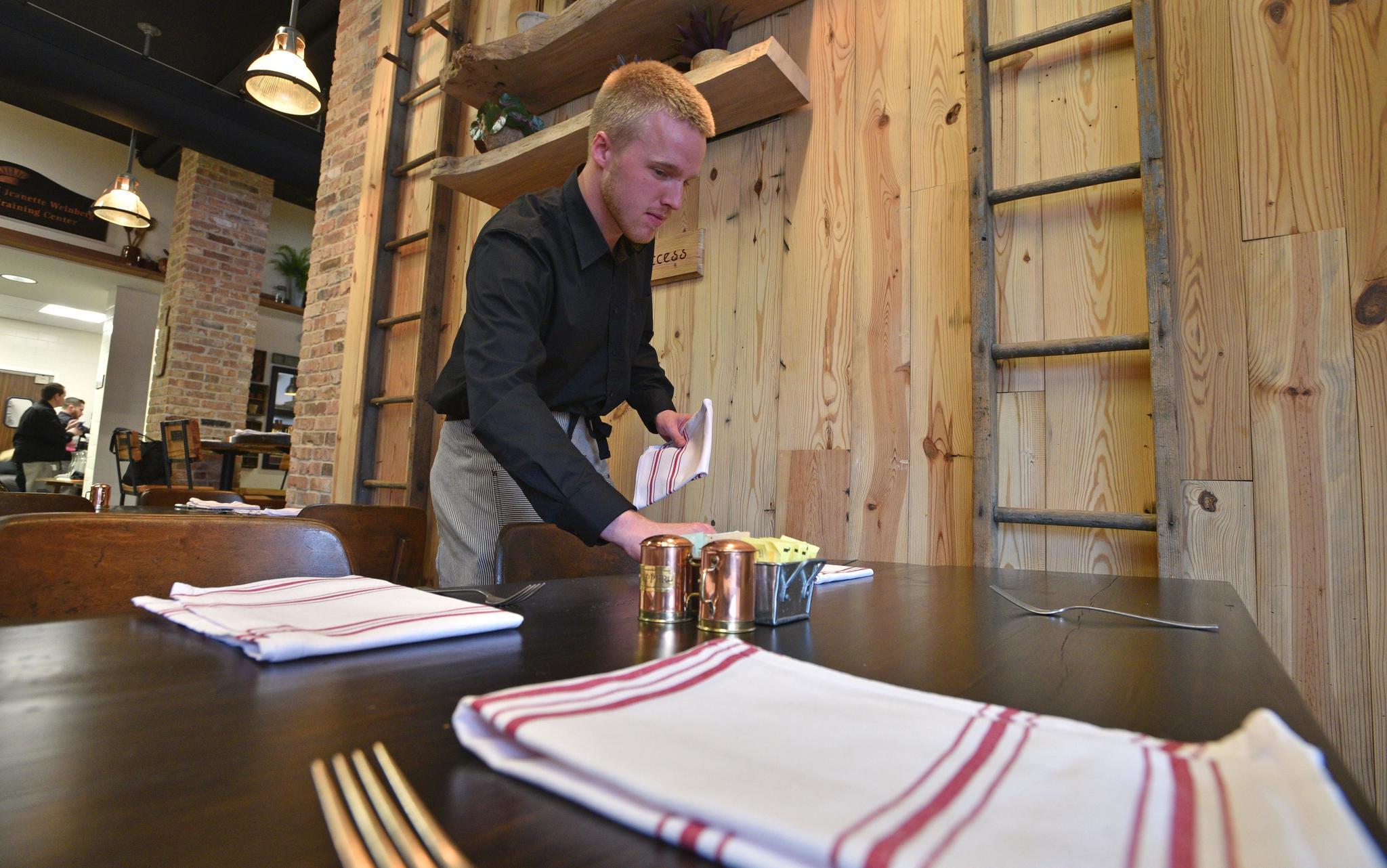“How is your food? Is there anything else I can do for you?” Alex asked our table with a genuine tone.
“Everything is delicious, thank you so much,” we all responded in unison.
As I devoured my turkey burger, I couldn’t help but feel overwhelmed. Delicious food, impeccable service, well designed decor — no it’s not that I’ve never eaten at a nice restaurant before. I was simply taken aback because some 16 weeks ago Alex and nearly everyone else working at Light House Bistro on that crisp autumn evening had been homeless.
From homeless to running an unbelievable fine-dining operation in the heart of downtown Annapolis, Maryland in 16 weeks. I had to learn more.

Fortunately for me, Light House Bistro made their story quite prevalent. As we were shown our table the host said, “Our drink menu is on page one, the dinner menu is on page two, and our mission and story are on page three. Enjoy your meal.”
Page three begins with a headline that reads, “The Light House Brings Social Enterprise to Annapolis!” And a passage below starts with, ”Social enterprises create revenue from selling goods and services in the open market. All profits are reinvested back into the mission of the organization benefiting people in need and the communities in which they live. The bottom line for The Light House Social Enterprise is employment for people experiencing homelessness.”
The Light House Bistro not only delivered an unforgettable culinary experience, but also a deeply meaningful and humbling personal one. Alex, the cooks, nearly everyone working in the restaurant had been homeless at some point. Now, they all seemed to dance through the tight-cornered restaurant, gracefully delivering three different desserts (I highly recommend the grilled bread pudding) to our table. I was blown away.
Gloating about my amazing meal is not the purpose of this blog post, however. Instead I want to focus on how Light House, a homeless prevention support center used “outside the box” thinking to increase their bottom line. Earned income, most easily associated with Girl Scout cookie sales, is the process of generating revenues from the sale of goods or services. How did a homeless support center end up in the restaurant business, and what we can learn from their story that you can apply at your nonprofit? Let’s find out.
What is earned income?
Nonprofits have a variety of ways to generate revenue. Most techniques stem from fundraising so we often think that the bulk of nonprofit revenue is derived from charitable giving. This is a misnomer though; nearly fifty percent of nonprofit revenues actually stem from fees for services.
That may come as a bit of a surprise, but it shouldn’t. The recent explosion of B corps and the ever changing definition of “charitable giving” shine light on the evolving world of how nonprofits make money.
Plus, as annual reports show, individual giving isn’t really growing. Sure, more dollars are being donated each year, but as a percentage of gross domestic product, charitable giving has been flat for more than thirty years.
What does all this mean for you and me? It suggests that we have to think of new ways to generate revenue. The tried and tested ways of the past work, but if your mission and vision is to expand your organization’s capacity and ability to effect change, you need new and innovative ways to do that.
Welcome to the world of earned income.
Light House Bistro case study

Light House’s mission is easy to understand: “To help rebuild lives with compassion by providing shelter and services to prevent homelessness and empower people as they transition toward employment, housing and self-sufficiency.”
Light House also has a succinct vision for the future, “to serve as a national model for how a community cares for its homeless. We strive to break the cycle of homelessness by providing a place of belonging, life-changing programs, and a broad continuum of support to people who are homeless or at risk of becoming homeless.”
Light House operates an emergency shelter for the homeless, as well as transitional housing for individuals and families. They also offer a variety of programs, including counseling and referral services, basic life skills, and wellness and job training programs that help clients reclaim hope and independence in their lives.
Before opening Light House Bistro in early 2017, Light House generated most of their income in traditional ways. Reviewing their financial summary shows that only 7% of their income in 2016 was derived from “Other, including Social Enterprise.” The remaining 93% came from the usual suspects: individuals, corporations, foundations, etc.
The staff and board at Light House knew that in order to further the organization’s mission and vision they would need to be innovative. To break the cycle of homelessness you need to have a job, housing and support. With the recent construction of a new shelter in Annapolis, Light House’s board of directors envisioned a way to transform the “old” shelter into a thriving social enterprise. The board imagined that graduates from the 16 week B.E.S.T. (Building Employment Success Training) job training program could take the skills they learned and apply them at a social enterprise run by Light House.
The idea for Light House Bistro stemmed from an extension and furthering of the organization’s mission. Opening Light House Bistro would create jobs for graduates, and ensure they have a next step upon completion of the B.E.S.T. program.
It’s important to identify that earned income opportunities need to complement or supplement your organization’s mission . Light House Bistro is an amazing example of this.
But another more blunt consideration to have when approaching earned income and social enterprise is the financial aspect. Will your entrepreneurial activities be profitable? On the surface this may seem like a straightforward question of revenue minus costs, but think for a moment about the peripheral benefits derived from engaging in social enterprise.
Aside from the revenue generated by the enterprise directly, there are two secondary benefits that can result in more money for the organization;
- Expanded awareness of the underlying organization mission and, ultimately, engaging with more potential donors, and;
- Engaging the board in a meaningful and impactful way in the organization’s growth and development.
By venturing into the world of earned income Light House not only created a new revenue stream, but they also created a new channel to engage potential donors. On the night I ate there, the restaurant was packed with dozens and dozens of folks eating, laughing and learning about the Light House mission. I can only imagine that many other diners had similar thoughts to mine: “How do I contribute? Where can I donate?”
Visiting the Light House Bistro moved me to the “awareness” stage of the marketing funnel for the Light House Shelter. Think of the thousands of people who have eaten at this restaurant since it opened earlier this year. All of those individuals are now also in the “awareness” stage of the funnel. From a fundraising or marketing standpoint, the Light House Bistro serves as brilliant donor acquisition channel. It provides an amazing first encounter with an amazing organization.
Win-win.

Plus, venturing into social enterprise allows for greater board involvement. Most boards are filled with industry veterans and titans of the business world. By thinking innovatively and breaking down the traditional boundaries of nonprofit fundraising, Light House created a creative outlet for their board members to engage with the organization. Not only can you learn more about the true interests and passions your board members have, but you can also get them engaged in ways that never seemed possible before.
It will be interesting to review Light House’s financial summary for 2017. Hopefully revenues have increased across the board. If they do, I think that will be a great sign for how social enterprise can have financial impacts beyond the profit that only comes from selling a product.
Applying this at your shop
What can we learn from Light House? Here are a few key takeaways:
- Think outside the box. Is a restaurant related to a homeless shelter? On the surface, no. But when you dig a bit deeper you realize that it absolutely can be. What is the “not so obvious” extension of your mission?
- Get the board involved. What industries and sectors does your board have great experience in? Get them involved in the creative and operational parts of the process. This will ensure that you aren’t overwhelmed while also building lasting relationships with board members.
- Think strategically about the distant future. Can you rely on individual giving or grant funding forever? Where do you see your organization in five to ten years? Think strategically about how an earned income strategy could make your organization more sustainable.
To learn more about Light House, and Light House Bistro please click here.





Nice article. Most of the social enterprise efforts in the past have been thrift store related. That’s how The Salvation Army funds the local Corps ministries.
I like the idea of exploring the addition of an earned income component to our charity. Please share any ideas you can think of for an enterprise effort that would have a natural connection to the mission of a Catholic high school serving a diverse population with half of the students receiving financial assistance. Thanks!